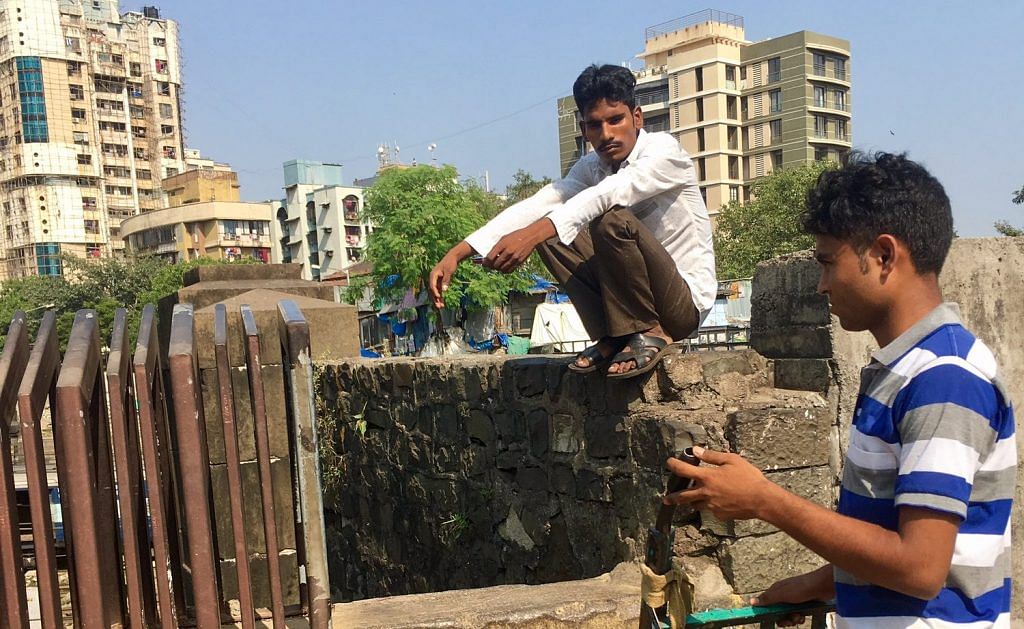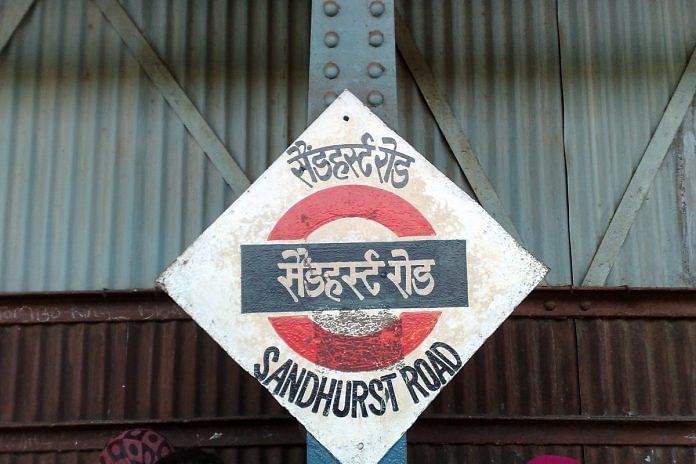The Bombay HC directed the state to seek the Army’s help in building a bridge near Sandhurst Road station, but it’s stuck in red tape and litigation.
Mumbai: Much before Tuesday’s controversial decision to get the Army to build a foot over-bridge at Mumbai’s Elphinstone Road station, the military had been roped in to build another bridge – less than six kilometres away. But not an inch has been built yet.
This bridge is supposed to connect the two sides of south Mumbai’s Sandhurst Road station across the railway lines, where the British-built Hancock Bridge stood for 135 years until January 2016, when the Central Railway and the Brihanmumbai Municipal Corporation (BMC) dismantled it.
In July 2016, the Bombay High Court directed the state to take the Army’s help in building the bridge, but a proposal for its construction remains mired in bureaucracy and litigation. In the meantime, several people have died at the spot, since there’s no way to cross the tracks in the absence of a bridge.
Shiv Sena’s Arvind Sawant, the member of Parliament for South Mumbai, alleged that the government’s move to bring in the Army for the Elphinstone Road station had a “political agenda” behind it.
“What is the logic in focusing only on Elphinstone and two other bridges (at Currey Road and Ambivali), and ignoring the requirement at the site of the Hancock Bridge, when so many lives are being lost here too?” Sawant asked.

A tangled web
At the time of dismantling the Hancock Bridge, the BMC had already drawn up plans to construct a new over-bridge. It soon tendered out the work and awarded the contract. However, the high court struck it down for being given to a blacklisted company following a PIL by social activist Jaishree Khadilkar.
The BMC re-tendered the work, but had to soon stall the process as the firm that originally won the bid challenged the high court order in the Supreme Court. The case is still sub judice.
Meanwhile, Kamlakar Shenoy, an activist who runs a restaurant opposite the Sandhurst Road railway station, not far from the site of the Hancock Bridge, filed a petition in the Bombay High Court, praying for a speedy solution, highlighting the increasing number of accidents on tracks.
“We are anyway waiting for the litigation around the contract to be resolved to build a permanent bridge,” said a BMC official who did not wish to be named said.
“However, following the activist’s petition, the BMC, the railways, as well as the state government, informed the court that it was not feasible to construct a temporary foot over-bridge due to lack of space, encumbrances, and high-tension wires on either side. As a last resort, the court directed the state government to take the help of the Army.”
In June this year, the Army came back with its report outlining two options – to retrofit an existing water pipeline across the railway tracks by altering the design and providing entry and exit points, or building a temporary foot over-bridge, subject to getting a clear 15-metre wide site on either side.
However, neither the railways nor the BMC have found the Army’s suggestions feasible, officials said.
“If we could get a 15-metre wide area on either side cleared, we would have built the temporary bridge ourselves,” said an official from the BMC’s bridges department said.
S.K. Jain, who recently took charge as the divisional railway manager, Mumbai, of Central Railway, said: “I had a word with the municipal commissioner regarding the Hancock Bridge. We will have to wait for the litigation around the contract to be resolved.”
Jain also said the Central Railway is yet to receive detailed plans from the Army’s Military Engineering Services about how and in what time-frame it plans to build the promised foot over-bridges at Currey Road and Ambivali, which come under the Central Railway’s jurisdiction.
“We don’t know yet if these would be temporary or permanent bridges. However, it is a new experiment, and there is no harm in trying it out as long as people are getting the required service,” he said.




@ Santa Banta: Gutter knowledge and poor sense of humor. First of all, it’s Military engineer services. Brother it is one of the most efficient defence organisation in terms of Technical expertise. Being a defence organisation it is much disciplined and much efficient as compared to purely civilian department like PWD/ CPWD because they report their work progress ultimately to a uniformed military officer (EinC). Moreover, as it consists of defence civilians (IES officers) and Engineers regiment ( Combat Engineers) officers it provides ample balance of Discipline and knowledge.
Friend it’s vert easy to degrade any organisation on public forum and that’s sheer immaturity.
Ha ha ha
Military engineering services is nothing but old wine in new bottle. Our gullible public is not aware that it’s the bereaucrats who control this department. So naturally it will be as effective or ineffective as PWD. If you want double quick results then call in the Army engineers. They are nothing but combatants in uniform, disciplined, dedicated and motivated for the country.